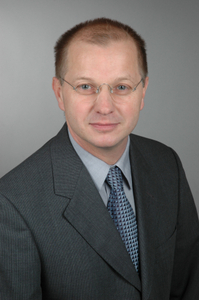


The design and development of advanced materials require precise adjustments of their physical and mechanical properties to particular conditions of engineering operation. These properties have to be reliably ensured for extended time periods at high thermal, mechanical and corrosive loads. Therefore, interactions of the materials microstructure and the resulting properties under various environmental conditions should be understood in detail. In this context, a modern approach for the efficient development of functional and structural materials is the combination of computational materials thermodynamics with key experiments guided by the results of the calculations. The thermodynamic modeling of the heterogenous phase reactions is the basis for the understanding of the microstructural developments. With the introduction of new thermodynamic models during the past decade the structural descriptions of intermetallic and ceramic solution phases - and thus their heterogeneous reactions - have been refined significantly. Especially, by describing the models in the compound energy formalism, the crystallography and solid state physics of solution phases can be taken into account in detail. This approach results in analytical descriptions for the Gibbs free energy functions of all system phases which are stored in computer databases and used for application-oriented calculations. From phase diagrams, property diagrams and thermodynamic data, heterogenous solid state reactions in bulk materials can be derived and significant contributions to the understanding of the microstructure development are made possible. Additionally, reactions in coating systems, the solidification of liquid phases or the volatility of gas species can be assessed. This approach is suitable for metals, ceramics and their composites. This presentation will introduce recent results on the investigation and development of light alloys (Mg, TiAl) as well as on ceramic materials (liquid phase sintered and precursor derived) using the described approach. The results will be compared with our findings from microscopy, XRD, thermal analysis (DTA, TGA, Dilatometry) and chemical data.



The design and development of advanced materials require precise adjustments of their physical and mechanical properties to particular conditions of engineering operation. These properties have to be reliably ensured for extended time periods at high thermal, mechanical and corrosive loads. Therefore, interactions of the materials microstructure and the resulting properties under various environmental conditions should be understood in detail. In this context, a modern approach for the efficient development of functional and structural materials is the combination of computational materials thermodynamics with key experiments guided by the results of the calculations. The thermodynamic modeling of the heterogenous phase reactions is the basis for the understanding of the microstructural developments. With the introduction of new thermodynamic models during the past decade the structural descriptions of intermetallic and ceramic solution phases - and thus their heterogeneous reactions - have been refined significantly. Especially, by describing the models in the compound energy formalism, the crystallography and solid state physics of solution phases can be taken into account in detail. This approach results in analytical descriptions for the Gibbs free energy functions of all system phases which are stored in computer databases and used for application-oriented calculations. From phase diagrams, property diagrams and thermodynamic data, heterogenous solid state reactions in bulk materials can be derived and significant contributions to the understanding of the microstructure development are made possible. Additionally, reactions in coating systems, the solidification of liquid phases or the volatility of gas species can be assessed. This approach is suitable for metals, ceramics and their composites. This presentation will introduce recent results on the investigation and development of light alloys (Mg, TiAl) as well as on ceramic materials (liquid phase sintered and precursor derived) using the described approach. The results will be compared with our findings from microscopy, XRD, thermal analysis (DTA, TGA, Dilatometry) and chemical data.